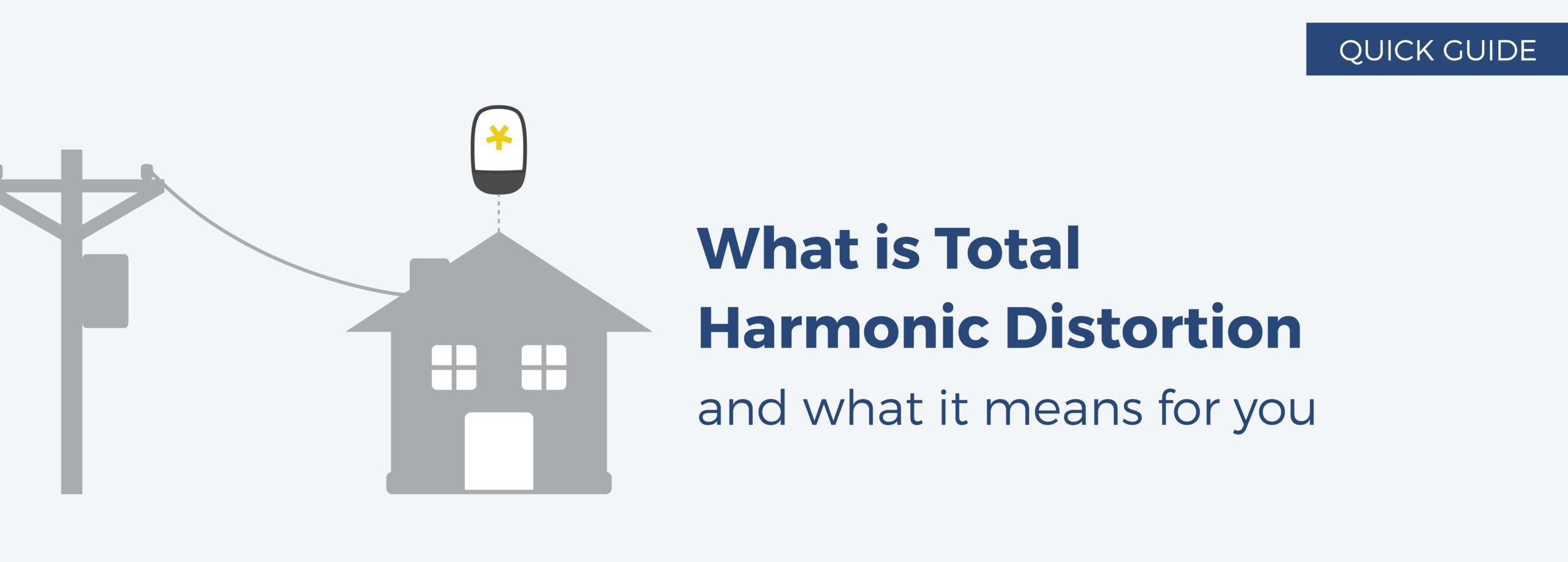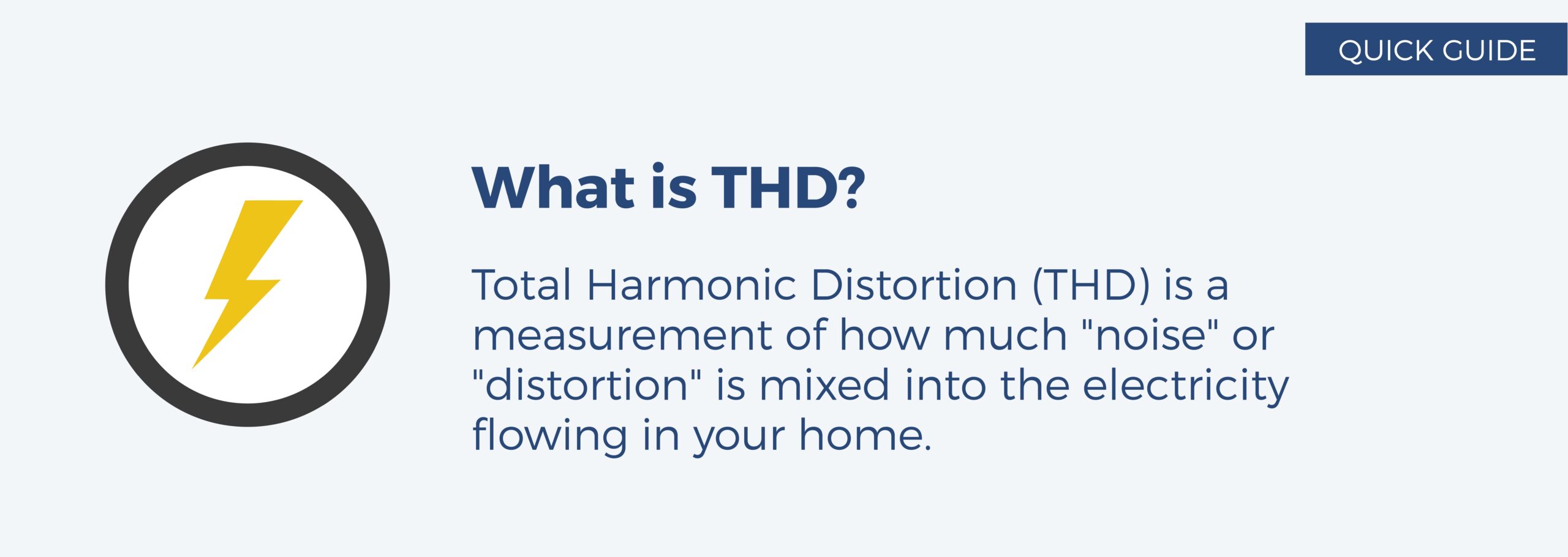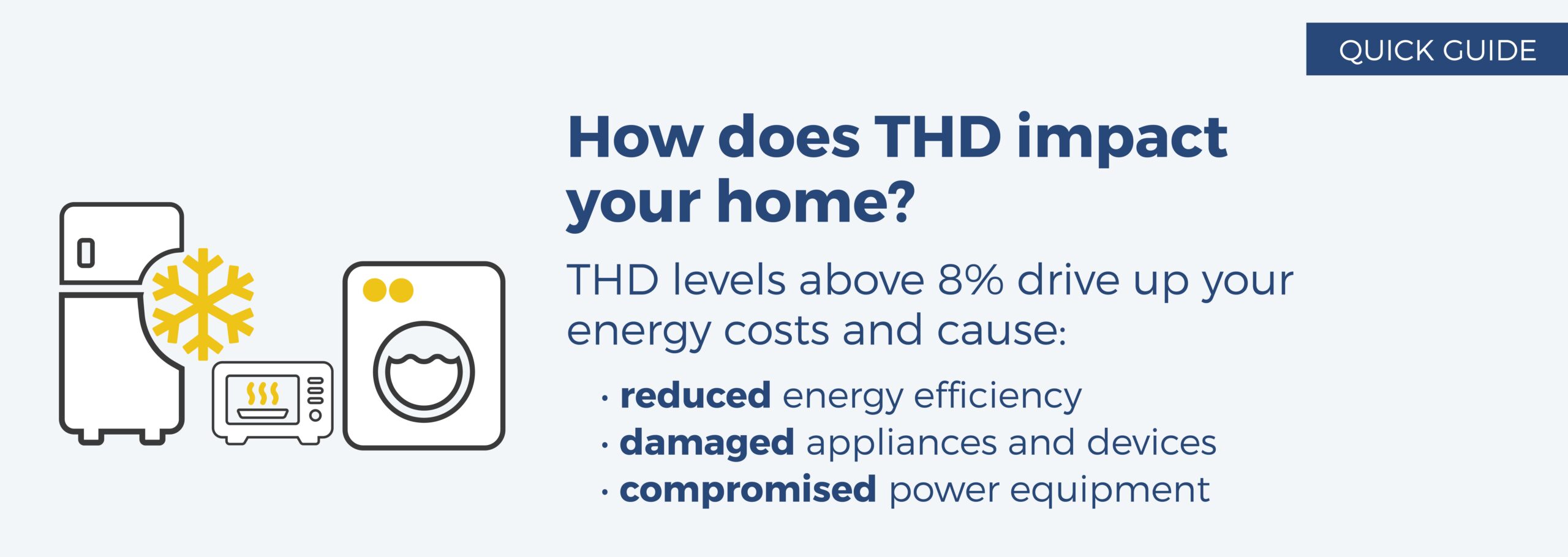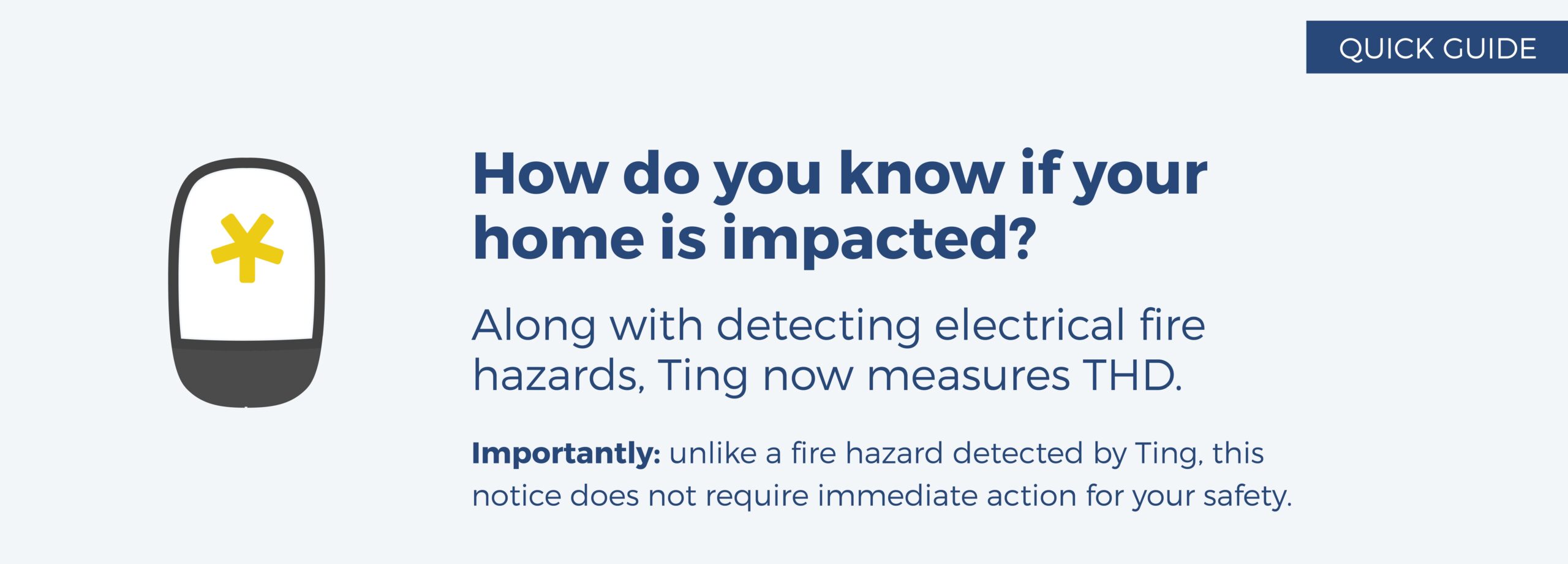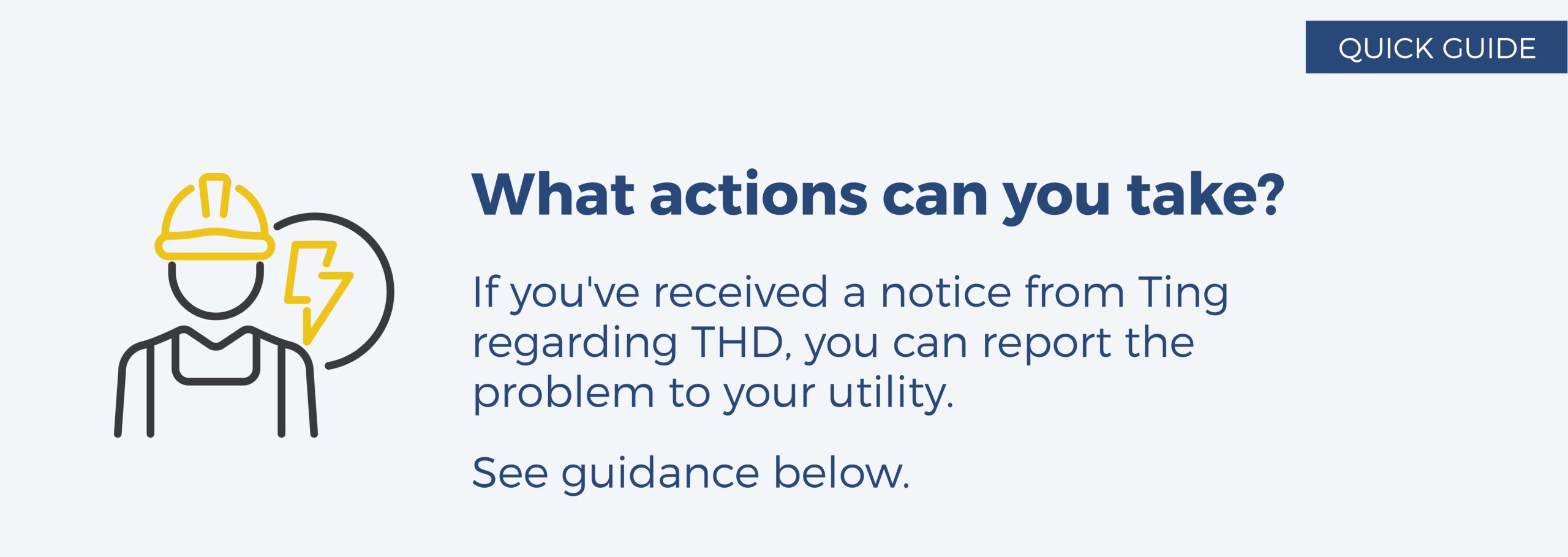Detecting Power Quality
Problems in Your Home:
Total Harmonic Distortion (THD)
You expect the power being delivered to your home to be safe & reliable, but that isn't always the case.
What is THD?
Total Harmonic Distortion (THD) is a measure of how much "noise" or "distortion" is mixed into the electricity flowing in your home.
The graph illustrates clean power (green) versus power distorted by THD (red dotted line).

How does THD impact your home?
THD levels should remain below 8% according to IEEE industry standards. THD levels above 8% drive up your energy costs and cause damage in your home, including:
- reduced energy efficiency
- damaged or reduced lifespan of your appliances and devices
- compromised utility power equipment
The higher the THD in your electrical system, the higher risk. The table below describes the effects of THD as levels increase:
<5%
Acceptable for most equipment, with minimal efficiency impact.
5-8%
Minor efficiency loss and slight heating increases in transformers, motors, and generators.
8-12%
Moderate efficiency loss, reduction in device and appliance lifespan reduction, and increased overheating and circuit breaker trips. Potential for audible noise and vibrations in motors and transformers.
12%+
Significant efficiency loss and potential damage to devices and appliances, severe overheating and stress on transformers and motors, potential equipment malfunction.
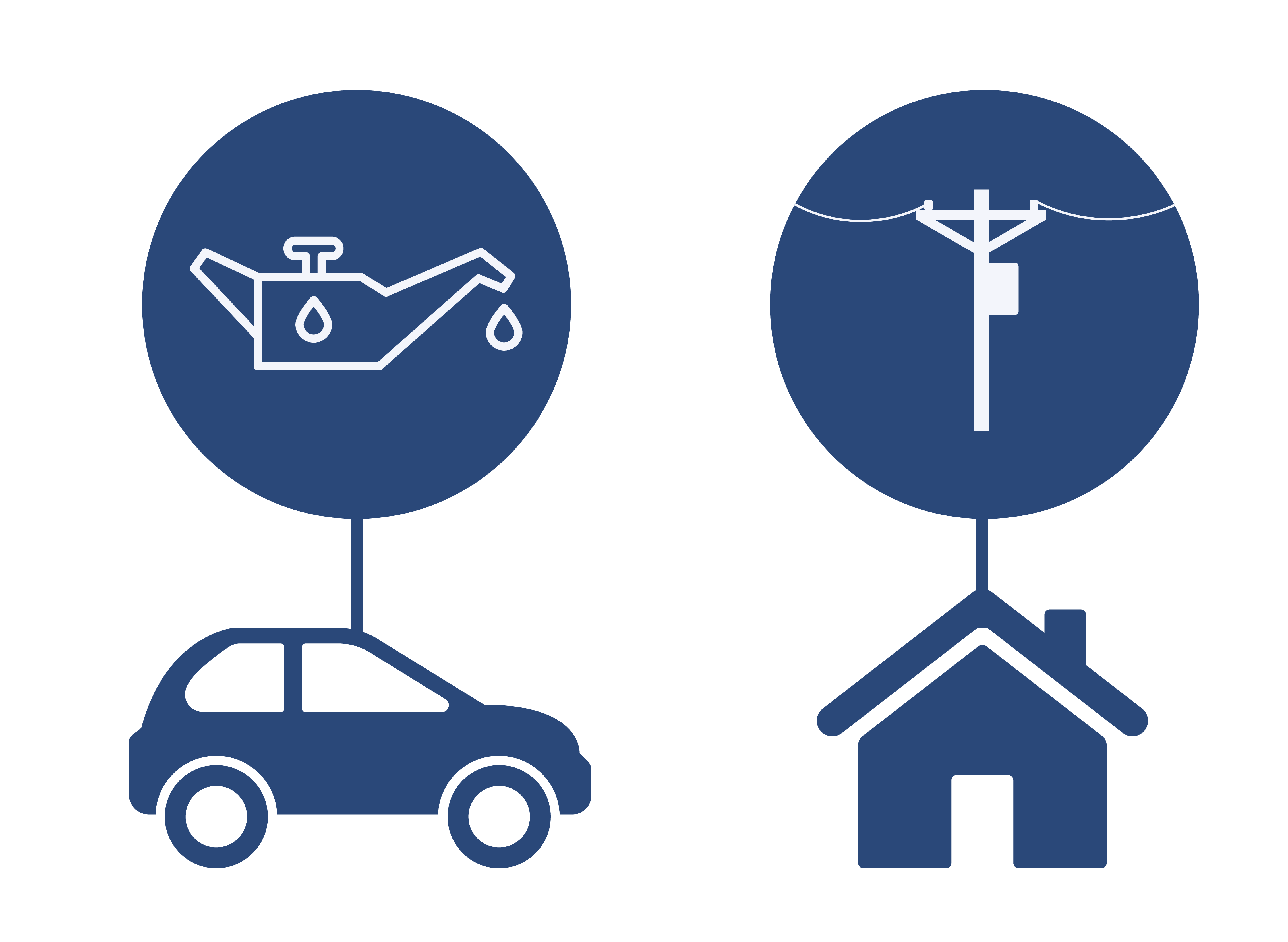
How do you know if your home is impacted?
Along with detecting electrical fire hazards, Ting can now measure when THD levels are above acceptable limits in homes. By integrating THD monitoring into Ting, we are helping to better understand and address grid issues on both a local and national scale.
Importantly, unlike a fire hazard detected by Ting, this notice does not require immediate action for your safety. However, elevated THD is an insidious problem that results in damages and inefficiency over time.
What actions can you take?
If you've received a notice from Ting regarding THD, you can report the problem to your utility via email so they can take the appropriate action.
FAQs
Your Ting sensor is designed to monitor a home's wiring for faults that could pose a fire risk. It also checks the quality of the power delivered to a home by the utility company.
As we consistently strive to improve Ting and provide additional value to our customers, we recently concluded extensive research and development regarding this often 'invisible' but important aspect of a utility provider's power quality. You can think of high THD as “dirty power”, almost like driving your car without changing the oil. Dirty power is measured as THD. If Ting detects THD levels in utility power that do not meet utility industry standards, we'll guide you on addressing it with your provider.
High levels of THD make electrical appliances and devices less efficient, wear them out faster, and even malfunction. This increases energy costs and diminishes the life of appliances, costing a homeowner more money.
If there's too much THD in a home's electricity, appliances like refrigerators, air conditioners, and even LED lights can heat up more, make strange noises, or not work as efficiently - which also means they use more energy and have a shorter life.
THD in a home electrical system can result from distortion in power delivered by the utility provider (Ting reports this measurement), devices inside the home, or both.
Distortion in local utility power can create THD that directly impacts power inside a home. If Ting generates a notice of high THD in a home, the source of the THD is the electric utility grid, as many of nearby neighbors with Ting sensors are measuring the same problem.
Yes, high THD makes appliances work harder than they need to, which leads to higher energy consumption and bigger electricity bills.
In many cases, high THD is hard to detect.
However, with elevated levels of THD, one might notice flickering lights, appliance buzzing noises, or devices and appliances that do not last as long as they should.
Yes, if a home's electrical system experiences high THD, it consumes more electricity, raising the overall cost of electricity used. It is always a good idea to be aware of THD, especially if you plan to add more electronic devices to your home or if you've experienced decreased appliance life spans.
Ting is the first broadly available technology to empower homeowners to receive real-time THD measurements in electric utility power.
If Ting has notified you regarding high THD, you can find out how to advise your utility, here.
Generally, a THD level of less than 5% is considered safe and won’t cause problems. Higher levels cause problems.
Unfortunately, utility companies do not monitor the quality of power being delivered to a home. Ting does.
THD is a complex phenomenon with applications in sound, telecommunications, and power (electricity and electrical circuits).
You can learn more by clicking the links below (these will take you to 3rd party websites)

